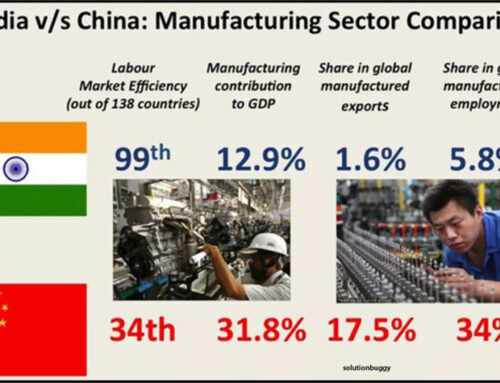What is Wholesale Prices
“Wholesale price” refers to the price set during the wholesale process of goods. This price is usually used when manufacturers or suppliers sell large quantities of goods to wholesalers, retailers, or other intermediaries. Compared to retail prices, wholesale prices are typically lower because wholesalers purchase in large quantities, reducing the profit margin per item but compensating for it through economies of scale. The setting of wholesale prices considers factors such as production costs, market demand, competition, and target profits.
In international trade, wholesale prices are influenced by various factors, such as order quantity, transportation costs, tariffs, and currency exchange rates. These factors make wholesale prices volatile and uncertain. Different industries have different definitions of the minimum quantity for wholesale pricing. In the pickleball paddle industry, the minimum quantity required to obtain a wholesale price is generally 100 pieces, meaning customers must place orders at or above this quantity to qualify for the wholesale price.
Pricing Principles
The principles of wholesale pricing are based on various economic and market factors to ensure that suppliers achieve profit targets while maintaining competitiveness in bulk sales. The following are the main principles of wholesale pricing:
Cost-Based Pricing
The principles of wholesale pricing are based on various economic and market factors to ensure that suppliers achieve profit targets while maintaining competitiveness in bulk sales. The following are the main principles of wholesale pricing:
Production costs: include raw materials, labor, manufacturing expenses, equipment depreciation, and R&D costs. Wholesale prices must at least cover these direct costs to ensure that the company does not incur losses due to unrecouped production costs.
Indirect costs: cover transportation, warehousing, marketing, packaging, and administrative expenses. These costs are usually allocated proportionately to each item to ensure that each item bears its share of the expenses.
Characteristics:
- Cost-Centric: The cost-based pricing strategy is entirely based on the production costs of the product. When setting prices, the company first calculates all production costs per item, then adds the percentage of profit the company wishes to achieve. This method ensures a direct correlation between price and cost.
- Simple to Operate: The advantage of cost-based pricing lies in its simplicity and ease of operation. As long as production costs are accurately calculated, a reasonable price can be set.
- Cost-Driven: In this pricing method, cost is the primary factor in determining price, while market demand and competition are secondary. This characteristic sometimes causes cost-based pricing to overlook market sensitivity to price.
This pricing strategy is relatively common among Chinese suppliers, as it ensures that companies maintain a reasonable profit in a competitive market environment.
Market Competition Pricing
Market competition pricing, also known as competition-oriented pricing, is a strategy where product or service prices are set based on the price levels of competitors. This pricing strategy is particularly applicable in highly competitive markets where companies need to use pricing to maintain or increase market share.
Characteristics:
- Market-Oriented: When adopting a market competition pricing strategy, companies closely monitor the pricing strategies of competitors and choose similar or slightly higher/lower prices to maintain competitiveness.
- Highly Flexible: Market competition pricing is highly flexible and can quickly adjust prices based on market conditions and competitor dynamics, especially in price wars, where this strategy can effectively respond to market changes.
- Not Cost-Focused: Although costs remain important, market competition pricing places more emphasis on the competitive environment and customer perceived value, rather than solely relying on costs.
Target Profit Pricing
Target profit pricing is a strategy where product prices are determined based on the profit target set by the company. The core of this approach lies in first setting a specific profit target and then working backward to calculate the necessary sales volume and corresponding pricing to achieve this profit target.
Characteristics:
- Profit-Focused: The primary goal of target profit pricing is to achieve a specific profit target, rather than merely covering production costs. Therefore, this method is more concerned with the final financial outcome.
- Market Demand and Competition Consideration: When setting target profits, companies usually need to consider market demand, competitive situations, and sales forecasts to ensure that the set prices attract customers while achieving profit targets.
- Higher Flexibility: Compared to cost-based pricing, target profit pricing is more flexible. It not only considers costs but also takes into account market conditions and the company’s profitability goals, making prices better reflect market realities.
Market Positioning and Brand Impact
Market positioning and brand impact pricing strategies set product prices based on the company’s market positioning and brand image. By influencing consumer perceptions of product value through unique positioning and brand value, companies can set corresponding prices.
Characteristics:
- Brand Premium: For products with strong brand influence or positioned in high-end markets, companies can often set higher prices through brand influence. These prices are usually above the market average because consumers are willing to pay a premium for brand-added value.
- Market Segmentation: Companies set different pricing strategies based on the positioning of their target markets. For example, luxury brands will set higher prices for high-end customer segments, while mass brands attract a broader consumer base with lower prices.
- Differentiation: Through market positioning, companies can shape the unique value of their products, allowing them to stand out among similar products and command higher prices.
Economic and Legal Factors
Economic and legal factors are external environmental factors that companies must consider when setting pricing strategies. These include economic conditions, inflation rates, exchange rate fluctuations, government tax policies, tariffs, and industry laws and regulations.
Characteristics:
- Economic Conditions: Companies need to consider the overall economic environment when pricing. For example, during periods of economic prosperity, consumer purchasing power increases, allowing companies to raise prices; conversely, during economic downturns, companies may need to adjust prices to maintain sales and market share.
- Inflation and Exchange Rates: Inflation often leads to rising production costs, which may require companies to raise prices to maintain profit margins. For companies involved in international trade, exchange rate fluctuations also directly affect import costs and export prices.
- Laws and Regulations: Government tax policies, tariffs, antitrust laws, price controls, and other legal regulations directly influence a company’s pricing strategies. For instance, certain industries may be subject to government price controls, requiring companies to operate within the prescribed price range.
How to Get Lower Wholesale Prices
Securing lower wholesale prices is critical for companies, as it not only increases profit margins but also enhances market competitiveness. The following strategies can help companies achieve this goal:
Bulk Purchasing
By purchasing in large quantities, companies can obtain more favorable wholesale prices from suppliers. The economic logic behind this strategy is “economies of scale.”
- Economies of Scale: When a company places large orders, suppliers can lower unit costs through mass production, enabling them to offer lower prices. Bulk purchasing not only helps companies reduce procurement costs but also improves supplier production efficiency, creating a win-win situation.
- Long-Term Contracts: Signing long-term procurement contracts with suppliers, committing to consistent large orders, can also result in lower prices. Long-term cooperation provides suppliers with production planning stability, making them more willing to offer better discounts.
Negotiation Skills
Negotiation plays a key role in securing lower wholesale prices.
- Price Negotiation: Gaining an in-depth understanding of the market and supplier cost structure helps companies hold advantageous positions in negotiations. During negotiations, companies can emphasize long-term cooperation, order scale, or quick payment terms as bargaining chips to secure lower prices.
- Multi-Supplier Bidding: Requesting quotes from multiple suppliers simultaneously and using competitor pricing as a negotiation tool can effectively pressure suppliers to offer lower prices. This strategy enables companies to obtain the best price without compromising quality.
Cost Analysis and Transparency
In-depth cost analysis and price transparency are crucial when companies negotiate prices with suppliers.
- Cost Accounting: Understanding the cost structure of suppliers and identifying the cost drivers helps companies make reasonable price requests. For example, when the price of a particular raw material drops, companies can request that suppliers correspondingly lower wholesale prices.
- Price Transparency: Conducting market research or communicating with other customers to obtain supplier pricing information ensures that procurement prices are reasonable and competitive. This process helps companies hold advantageous positions in negotiations.
Long-Term Cooperation and Strategic Alliances
Establishing long-term strategic cooperation relationships is an effective way to secure lower wholesale prices.
- Strategic Partnerships: By establishing long-term cooperation relationships with suppliers, suppliers may be willing to offer lower prices to maintain stable order flows. Additionally, this cooperation can bring more synergistic benefits in areas such as technology development and market expansion.
- Joint Investment: Co-investing with suppliers in production facilities or new technologies can reduce production costs for both parties, ensuring that companies obtain the most favorable prices. This cooperative model not only helps reduce costs but also enhances product competitiveness.
Prompt Payment
Quick payment is also an important factor for companies to secure lower wholesale prices.
- Quick Payment: By offering faster payment terms, such as prepayment or shortened payment cycles, companies can exchange for supplier price discounts. Quick payment significantly benefits the supplier’s cash flow management, making them more willing to reduce prices. In the Chinese market, many companies suffer from cash flow disruptions due to long payment cycles, leading to business difficulties. Therefore, prompt payment is also a key factor in encouraging suppliers to lower wholesale prices.
Market Trend Utilization
Leveraging market trends can help companies secure lower prices during procurement.
- Timing Selection: Companies can achieve lower prices by purchasing when suppliers have high inventory or when market demand is low. For example, in the pickleball paddle market, demand peaks in the U.S. from March to August. Therefore, importers and retailers typically stock up during this period to meet market demand. To prepare for the peak season, many importers place orders early in the spring (e.g., January or February) to ensure sufficient inventory during the March to August sales peak. After this period, supplier orders generally decrease, inventory increases, and it becomes easier to negotiate better prices.
- Raw Material Price Fluctuations: When raw material prices drop, companies should adjust procurement strategies promptly, taking advantage of price troughs to purchase in bulk and lock in lower wholesale prices. For pickleball paddles, surface materials such as carbon fiber are significant price determinants. Therefore, when carbon fiber prices drop significantly, companies can seize the opportunity to request price reductions from suppliers.
The End about Mayvoci
1)Design:Over 100 paddle designs and photography service to assist start-up.
2)Professional:Focus on various of paddles manufacturing for 6 years
3)Quality:Strict quality management system to provide safety and satisfaction for customers
4)Amazon:Flexible comprehensive solution to make sure each Amazon seller is well cared.
5)Excellent Team:Experienced paddle experts & dynamic sales team give you 5-star service





